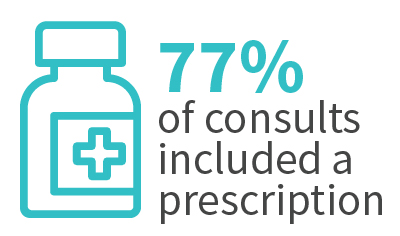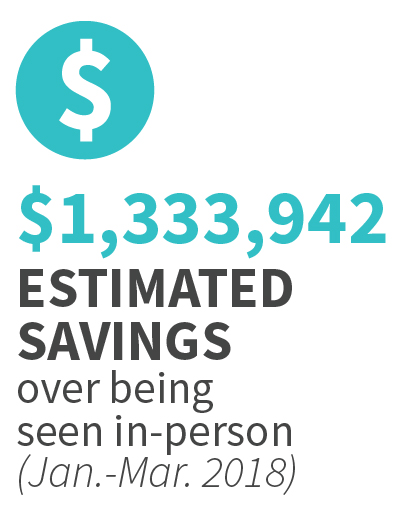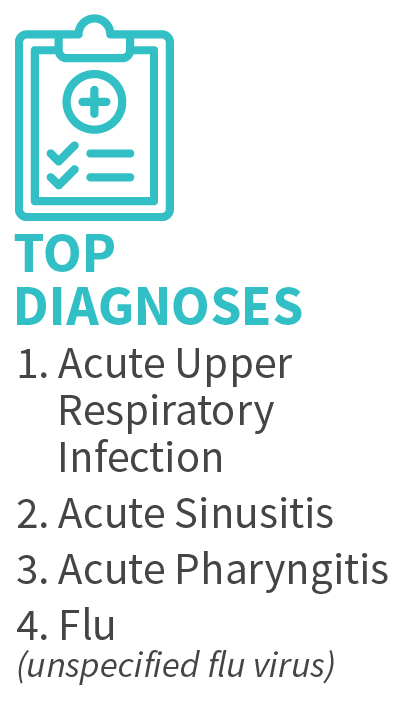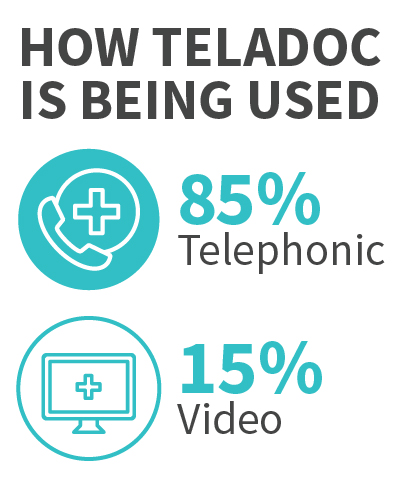[image-caption title="%20" description="Alaska%20Village%20Electric%20Co-op%E2%80%99s%20Meera%20Kohler%20saved%20$150%20and%20valuable%20time%20by%20using%20NRECA%E2%80%99s%20latest%20medical%20plan%20benefit,%20Teladoc.%20(Photo%20By:%20Luis%20Gomez%20Photos)%20" image="/news/PublishingImages/Alaska-Teladoc-Meera-Kohler.jpg" linking="lightbox" /]
Alaska Village Electric Cooperative's Meera Kohler had a hunch her lingering cough wasn't serious, but she wanted a quick chat with a doctor for peace of mind.
A fast consult was possible thanks to the Anchorage, Alaska-based co-op's participation in an NRECA pilot of a 24/7 health care service via telephone or video for co-ops enrolled in the association's medical care plan. About 5,300 subscribers at 30 co-ops in 16 states tested the service, known as Teladoc.
Kohler got an answer in 20 minutes and saved $150—without leaving her house.
"I had a conversation with a very knowledgeable and gracious doctor that did not include waiting in a clinic waiting room and going through the process of waiting for the doctor and the results," said Kohler, president and CEO of
AVEC and NRECA Alaska director.
 "I more or less got exactly the same result had I gone to the clinic…an offer of a prescription for a cough suppressant, which I declined since I already had some," said Kohler.
"I more or less got exactly the same result had I gone to the clinic…an offer of a prescription for a cough suppressant, which I declined since I already had some," said Kohler.
In all, participants in the Teladoc pilot last year reported similar positive reviews, as well as $535,641 in savings. As a result, the option is now available to the NRECA Medical Plan participants.
 So far, the NRECA Medical Plan and participants have saved an estimated $1.3 million between January and March of this year, according to NRECA Insurance & Financial Services data. The savings come from participants avoiding costlier trips to the doctor, urgent care center or emergency room.
So far, the NRECA Medical Plan and participants have saved an estimated $1.3 million between January and March of this year, according to NRECA Insurance & Financial Services data. The savings come from participants avoiding costlier trips to the doctor, urgent care center or emergency room.
NRECA selected Teladoc after a lengthy vetting process for a telemedicine provider to help members improve access to health care and reduce costs.
"There is a shortage of primary care physicians in this country," said Martin Ahrens, NRECA's senior director of health management services. "If you think about it, in the communities where our co-ops are located, there already are access issues. In many cases, they'll have to go 30 miles or more to seek primary care or urgent care."
 Telemedicine networks are "intended for certain diagnoses—bronchitis, sinusitis, pink eye, your kid's earache in the middle of the night—the kinds of things you'd have to take time off work for or go to the urgent care center for," said Ahrens.
Telemedicine networks are "intended for certain diagnoses—bronchitis, sinusitis, pink eye, your kid's earache in the middle of the night—the kinds of things you'd have to take time off work for or go to the urgent care center for," said Ahrens.
"And instead of driving 30 miles to the urgent care center and paying $250 if you're in the high-deductible plan, you'll get a phone call [from a doctor] on average within 15 minutes and pay only $45," Ahrens said.
 Teladoc is also a good fit for co-ops serving areas with limited broadband access because 90 percent of consults are over the phone, said Ahrens. In addition, it adds access to an additional 600 physicians practicing in the 47 states where co-ops operate.
Teladoc is also a good fit for co-ops serving areas with limited broadband access because 90 percent of consults are over the phone, said Ahrens. In addition, it adds access to an additional 600 physicians practicing in the 47 states where co-ops operate.
Meanwhile, in Alaska, where costs for medical visits can run 30 percent to 40 percent higher than in the lower 48, the service has been "a great tool," especially for prescriptions, said Kohler.
"I have a lot of employees who are traveling all the time, so they might be in remote villages and then they come down with something," said Kohler. "They can have a prescription called into a local clinic at the closest hub community—or go all the way back to Anchorage."
"It's an hour in a jet, depending on where you're coming from," Kohler continued. "And you're not going to fly back just because you're feeling lousy. You're going to stay where you are and fight it."
